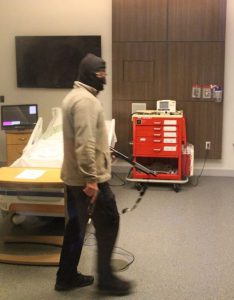Archive for the ‘Mass shooting’ Category
A gunman opened fire in the baggage claim area at Fort Lauderdale-Hollywood International Airport Friday afternoon, killing at least five people and wounding another eight.
Saturday, January 7th, 201712/14/2012: A 20-year-old man shoots and kills his mother at their Newtown, Connecticut, home then drives to nearby Sandy Hook Elementary School, where he kills 20 first graders and six school employees before turning a gun on himself.
Thursday, December 15th, 2016San Bernardino, 12/2/2015: It was the deadliest terrorist attack in the USA since the 9/11 attacks; 14 killed & 22 wounded.
Friday, December 2nd, 2016The University of Cincinnati Public Safety Director last year established training for an “active shooter” scenario like the one that unfolded Monday morning at The Ohio State University. Then he and his team started training faculty, staff and students on what to do in the event an attacker arrives on campus intent to kill or harm.
Tuesday, November 29th, 2016“…..However, campus police chiefs and other officials all said authorities would be remiss if their universities did not continually train and educate faculty, staff and students on what to do — and what not to do — in an active shooter scenario…..”
Police say a Somali immigrant, Abdul Razak Ali Artan, drove his car onto the sidewalk during a midmorning attack, hitting several pedestrians, then getting out of his car and wielding a butcher’s knife.
Tuesday, November 29th, 2016Ten people were taken to hospitals and one suspect was dead after a chaotic car-and-knife attack at Ohio State University on Monday morning; A second suspect was arrested.
Monday, November 28th, 2016Compressing the Zones of Care: An integrated active shooter response
Monday, October 17th, 2016Compressing the Zones of Care
The Hartford Consensus recommends that an integrated active shooter response should include the critical actions contained in the acronym THREAT:
- Threat suppression
- Hemorrhage control
- Rapid Extrication to safety
- Assessment by medical providers
- Transport to definitive care
A key component of the Hartford Consensus is this:
In the immediate aftermath of a mass casualty event, some lives may be lost through caution. The standard approach has been to cordon off the zone of casualties, a wide “hot zone,” until it’s been ensured that all threats are suppressed. The Hartford Consensus suggested that the plan be modified to allow earlier access to victims outside the real hot zone, the location of the active shooter, or a possible bomb. Thus, agreement on new systems of integration and coordination between law enforcement and other teams of responders is needed to ensure the mutual understanding and sequencing of roles.*
By compressing the “hot zone” with the two other zones of care, the “warm zone” and the “cold zone,” less time is lost and more time is made available to begin bleeding control techniques so that more lives are saved (see diagram below).
—
*Source: The Hartford Consensus. Improving Survival Strategies to Enhance Survival in Active Shooter and Intentional Mass Casualty Events:A Compendium. Published by American College of Surgeons, September 2015.
https://www.facs.org/~/media/files/publications/bulletin/hartford%20consensus%20compendium.ashx. Retrieved July 25, 2016.
A gun battle at an LA restaurant left 3 dead and 12 others wounded early Saturday
Saturday, October 15th, 2016An argument broke out. Then 3 men left the restaurant and returned with firearms and began shooting at another group.
https://www.youtube.com/watch?v=Paoi7lFrpak
NYC program sends unarmed firefighters and EMTs into ‘active shooter’ situations
Tuesday, October 4th, 2016“…..But the program has fueled concern among the unarmed first responders, who could be exposed to mass murderers or terrorists using assault weapons or explosives.
“It’s a f–king disaster,” a worried firefighter said. “We’re relying on these cops to give us the all-clear to head in and administer aid. What happens if there’s more than one shooter? We’re not ready for this.”
Another FDNY member dubbed it “the sitting ducks squad.”
Teams consisting of three firefighters, two EMTs and an EMS officer will wear bullet-resistant vests and helmets. Four cops specially trained for emergencies will guard them — two in the front and two in the rear.
It’s a drastic change from past practices. Usually, cops pull out victims, and medics wait in safe areas to give first aid.
Under the new plan, FDNY members would not go into a “hot zone” where a shooter or terrorist is still active. But they could enter a “warm zone”–with no imminent danger but still under threat — if escorted by the NYPD.
The only medical treatment given victims on the spot would be to stop heavy bleeding with a clotting agent or a tourniquet, or to clear the airways. The injured would be put on tarps and dragged out to safety as quickly as possible…..”





